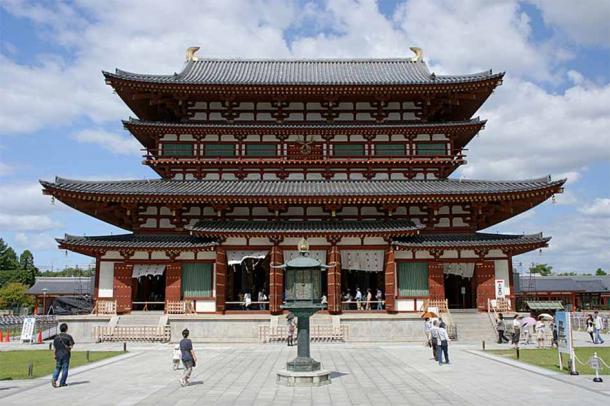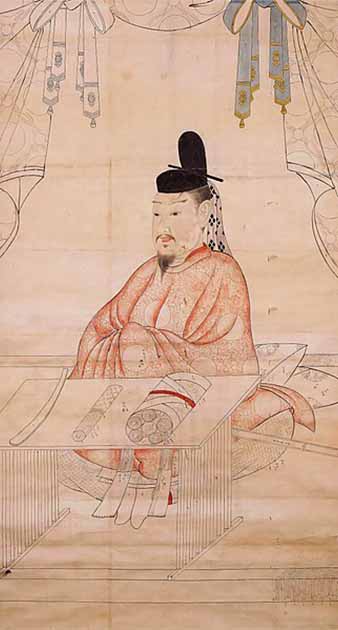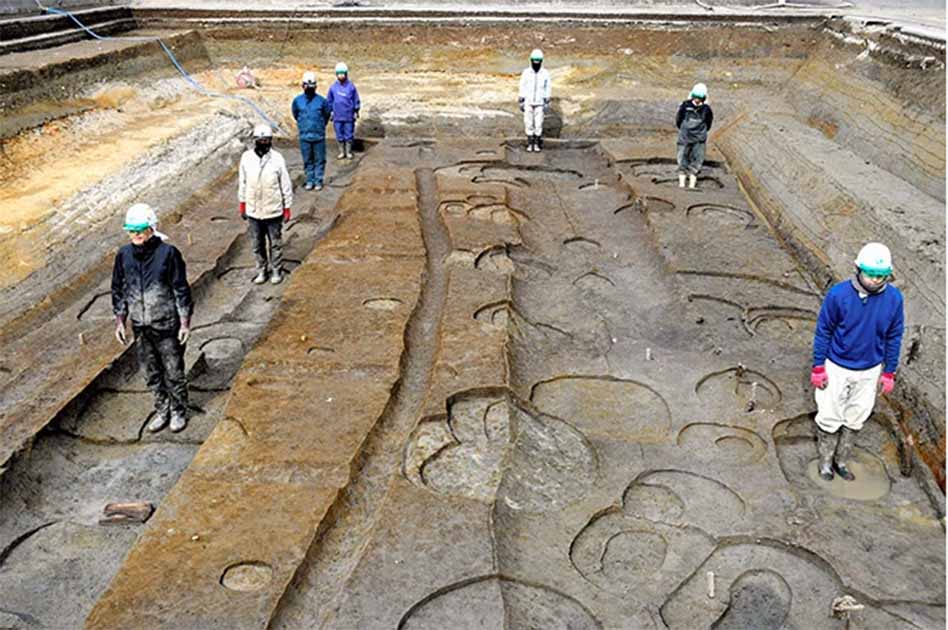Residence of 8th Century Japanese Prince Toneri Uncovered
Archaeologists in Japan excavated a site ahead of a new apartment building project. Little did they know they were digging into the spectacular home of the 8th century AD Prince Toneri!
Located in present-day Nara Prefecture, Heijo-kyo was the capital of Japan during the Nara period, from 710 AD to 784 AD. In 1988, researchers in Japan discovered buildings associated with Prince Toneri (676 AD -735 AD), who was a member of the Japanese imperial family during the Asuka period (538 AD - 710 AD). Prince Toneri is perhaps best known for compiling “Nihon Shoki” (The Chronicles of Japan), which represents the second oldest book in Japanese classical history.
- The discovery of a pyramid-shaped tomb in Japan that adds to mystery in Asuka
- The mysterious monoliths of Asuka Nara and the Rock Ship of Masuda
As the son of Emperor Tenmu and Empress Jito, and the younger brother of Empress Genmei, while Toneri didn’t ascend to the throne, he is legendary for his patronage of Buddhism, and for having constructed several temples in the Nara region, including the famous Yakushi-ji temple. Now, researchers from NARA have uncovered evidence of a prominent imperial residence that was built 1,300 years ago, and it is thought that it was the home of Prince Toneri.

Yakushi-ji is a Buddhist temple in Nara, Nara prefecture, Japan. (CC BY-SA 3.0)
Huge Pillars for An Enormous Residence
This early planned city was built on a square grid-pattern. With its palaces, temples, and administrative buildings, Heijo-kyo was a centre of politics, culture, and religion in Japan. And over time, the grid pattern became the underlying design format for all other Japanese cities.
The Nara City Board of Education announced on April 3 this year, that the early Nara Period site was identified as the location for a new apartment complex. Excavations conducted between January and March this year revealed a 370 square metres (3982.65 sq ft) site comprising three main buildings. Furthermore, the researchers identified an architectural method known as “hottate-bashira,” which involved setting massive timber pillars into the ground, to support a huge structure.

Portrait of Prince Toneri. (Public Domain)
A Prime Aristocratic Landscape
The archaeologists also found baked roof tiles that were made in the same kiln, “across an area equivalent to four towns.” The basic measuring unit for land at this time was called the “town,” which was a square area measuring 130 meters (426.5 ft) on each side. The archaeologists said this latest discovery “spans several towns, strengthening the theory that four towns were used integrally.”
- Kemari: Revival of a 7th Century Japanese Football Game in Modern Times
- Roman Coins Discovered at Japanese Castle Raise Questions of Ancient Connections
Aligned in a north-south configuration, the archaeologists identified three main buildings. According to a report in ASAHI the northernmost building is the largest measuring around 20 meters (65.61 ft) east to west and more than 10 meters (32.8 ft) north to south. The researchers also found square holes that had been dug out within the building for holding huge pillars in place, measuring 1.5 meters (4.92 ft) on each side. The excavated area was described as “prime land upon which the residences of aristocrats were built.”
Assigning Space According to Rank
Toshihide Omi, chief senior specialist for cultural properties with the Cultural Affairs Agency, suggested that the discovery of “several big building complexes that were fenced off,” suggests this was an aristocrat’s residence rather than an administrative building. He concluded that the new evidence means Prince Toneri “may well have had a massive residence in the center of the capital.”
It is known that Japanese Imperial family members, aristocrats and bureaucrats were granted residential land according to their rank. Aristocrats ranking fifth or lower were granted one town, while those in ministerial positions, such as Prince Nagaya (676 AD - 729 AD), who played a key role in political affairs, were granted four towns. The researchers believe that this site was most probably founded and built by Prince Toneri between the 7th and 8th century AD.
Now that the excavations are complete the new apartment complex will go ahead. However, while all this is fascinating for us history junkies, the report in ASAHI says “there are no plans to brief residents on the significance of the site or its artifacts.” Thus, very soon, this ancient residential complex and all of its buried heritage will be locked in cement, for the rest of time.
Top image: Researchers stand where massive timber pillars once stood to give a perspective on the size of the site of the home of Prince Toneri in Nara. Source: Nara City Board of Education/Asahi
By Ashley Cowie

















